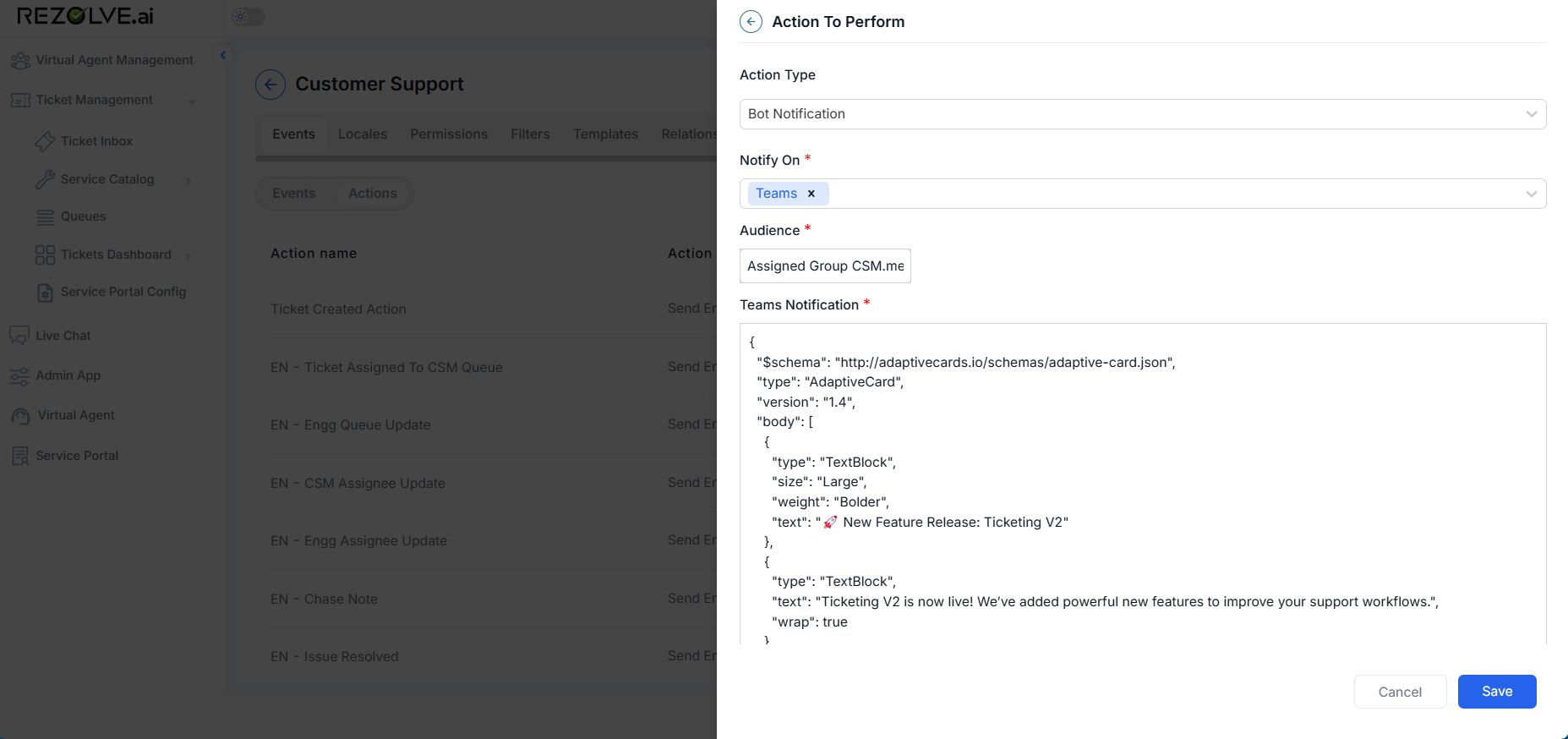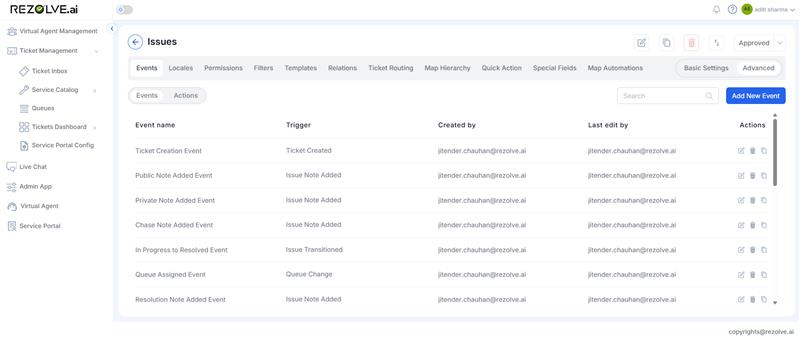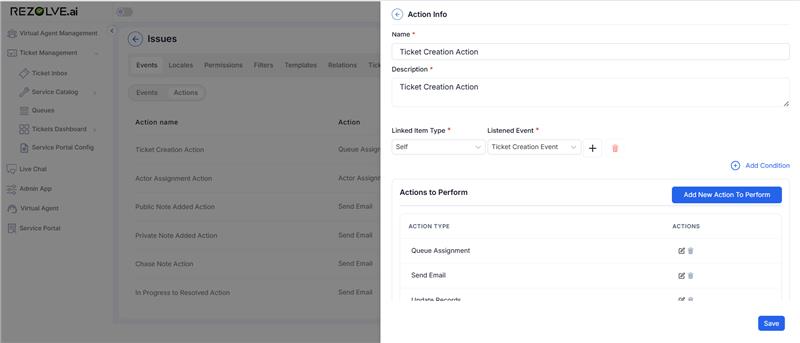Actions
Actions are responses to events that perform specific functions automatically. They streamline workflows and ensure consistent handling of tickets.
Action Types
Send Email
Creates and sends email notifications based on templates:
- Select recipients (customer, agent, manager, etc.)
- Choose the email template
- Configure dynamic content based on ticket fields
Update Records
Modifies field values automatically:
- Select which fields to update
- Define the new values (static or dynamic)
- Set conditions for when updates should occur
Create Issue
Generates a new ticket in response to an event:
- Select the template/offer for the new ticket
- Map fields from the triggering ticket to the new one
- Establish relationships between the tickets
Bot Notification Setup (Slack & Teams)
Our product allows administrators to automate communication using Bot Notifications via Slack and Microsoft Teams, triggered by defined events in the Event and Action module.

Overview: Event and Action Mechanism
The Event and Action feature allows the admin to automate responses based on specific events. One such action is sending bot notifications via Slack or Teams.
How to Configure Bot Notifications
Step 1: Navigate to Event and Action Configuration
- Go to the Admin Panel.
- Select Event and Action settings.
- Click on "Add New Action to Perform".
Step 2: Choose "Bot Notification"
- From the Action Type dropdown, select Bot Notification.
- Upon selecting this option, the following new fields will appear:
- Notify On* (dropdown)
- Audience
Field Details
Notify On*
- Select the platform for notification:
- Slack
- Teams
Teams Notification* (multi-line text box)
- This field appears when either Slack or Teams is selected in "Notify On".
- Input should be in platform-specific format:
- For Slack, use Slack Block Kit JSON
- For Teams, use Microsoft Teams Adaptive Card JSON
- Note: The textbox strictly accepts only valid JSON input. Any invalid format will be rejected.
Audience
- Use this field to define who will receive the notification.
- You can tag individuals or groups using:
- @username to notify specific users.
- @groupname to notify groups.
Trigger Webhook
Sends data to external systems via API:
- Configure the endpoint URL
- Format the payload data
- Handle authentication requirements
- Useful for integration with third-party ticketing systems
Queue Assignment
Changes the queue handling the ticket:
- Select the target queue
- Set conditions for assignment
- Include optional notifications
Actor Assignment
Updates ticket actors automatically:
- Assign tickets to specific users
- Add or change watchers
- Update the "Requested For" actor
Add to Knowledge
Converts ticket information to knowledge articles:
- Extract relevant content from notes or descriptions
- Format for knowledge base inclusion
- Apply appropriate categorization
State Transition
Changes the workflow status:
- Move tickets between statuses automatically
- Bypass normal workflow restrictions when needed
- Apply status changes based on complex conditions
Add/Remove Notes
Adds predefined notes to tickets:
- Select note type (public, private, chase, resolution)
- Configure note content (can include dynamic fields)
- Apply formatting as needed
Add/Remove Watchers
Manages the list of users monitoring the ticket:
- Add specific users or groups as watchers
- Remove watchers based on conditions
- Include CC watchers for email notifications

Action Configuration
Each action requires:
- Action Type Selection: Choose the appropriate action category
- Target Configuration: Specify what the action affects
- Conditional Logic: Define when the action should execute
- User Permissions: Determine who can initiate the action
